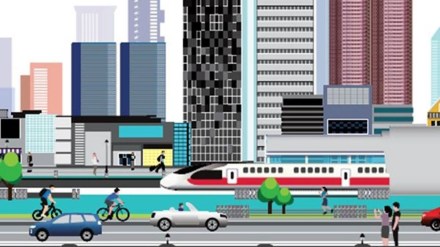A bustling city like Delhi-NCR has witnessed transformative growth in recent years. However, one of the major growth has been in expanding the metro network in several regions of Delhi-NCR. This has not only improved connectivity and eased traffic congestion but has also positively impacted the commercial real estate sector.
Some report analysis claims that since the commissioning of Blue Line in 2005, around 1413 commercial properties have been sold before and after.
Hike in Property Prices
The extension of metro lines has become the lifeline of the National Capital Region (NCR). The metro network has expanded to cover a vast expanse, connecting key areas within Delhi and extending into neighbouring regions like Noida, Gurgaon, and Faridabad. This has led to a 6% year-on-year increase in property prices between April and June 2023. This expansion has not only improved connectivity but has also had a profound impact on the local real estate market, especially in the commercial sector.
Transit-Oriented Development (TODs)
The concept of Transit-Oriented Development has been on the rise ever since the metro network has expanded in Delhi-NCR. TODs are designed to be walkable with smaller block sizes and also where less land is used for automobiles. They plan strategies which focus on creating houses and services which is around the public transportation stations. A research by the Institute of Urban Transport suggests that ever since the metro expansion, properties within TOD zones have witnessed a 20% higher appreciation compared to non-TOD areas.
Also Read: Should you keep jewellery at home or in a bank locker? Find out
Ease of Connectivity and Accessibility
Expansion of the metro in the Delhi-NCR regions has significantly reduced travel times and has improved connectivity between residential and commercial hubs. Over the last 5 years, it has been observed that commercial properties within a 1-kilometer radius of metro stations in Delhi-NCR witnessed an average price appreciation of 15%. To explain with an example, Connaught Place is one of the prominent commercial hubs in Delhi. Data suggest that commercial property prices in Connaught Place surged by 25% within two years of the metro station’s inauguration.
Footfall and Consumer Base
Metro expansion not only facilitates the movement of employees but also attracts a larger consumer base to commercial areas. Retail spaces, restaurants, and shopping complexes near metro stations experience increased footfall, translating into higher demand for commercial properties. Businesses strategically located near metro stations often witness higher profits, further fueling the demand for commercial real estate in these areas.
Foreign Investments
The greater accessibility brought about by metro extension also encourages foreign investment in commercial real estate. International businesses and investors often prioritize locations with robust public transportation networks, and the well-connected metro system in Delhi NCR acts as a magnet for such investments. This injection of foreign capital promotes the growth and development of commercial assets in the region.
The metro expansion in Delhi-NCR has proven to be a catalyst for the growth of commercial property prices. Improved connectivity, increased footfall, and the emergence of Transit-Oriented Development have reshaped the real estate landscape, making areas with metro accessibility highly sought-after by businesses and investors alike. As the metro network continues to evolve, the nexus between metro expansion and commercial property prices will likely remain a focal point for urban development and real estate investment in the National Capital Region.
(By Abhishek Raj, Founder and CEO of Jenika Ventures. Views are personal)
